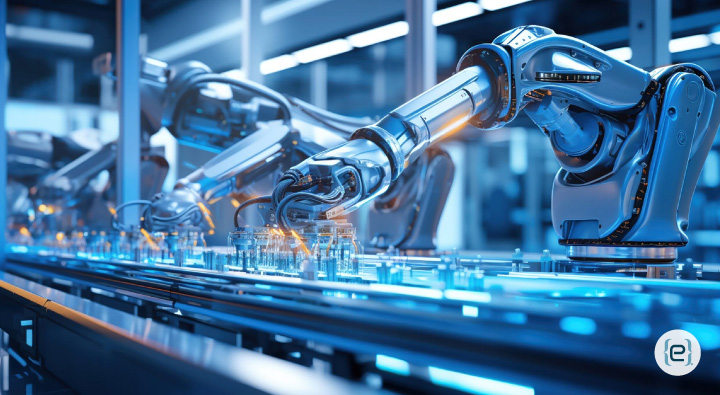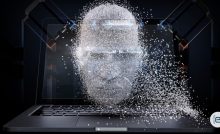Confessions of a Factory Tech Geek: AI is Eating Our Assembly Lines (And I’m Here For It)


Okay, so there I was last Tuesday, standing in what used to be your typical noisy, greasy factory. Except it wasn’t typical anymore—it was eerily quiet. Almost too quiet, like that moment in horror movies right before… well, you know. But this wasn’t the start of a robot apocalypse (though my caffeine-deprived brain briefly wondered). Nope, this was the future of manufacturing staring me right in the face, and I have stories to tell you.
Truth bomb: I’ve spent way too much time in factories over the last decade. Like, “my car can autopilot to industrial parks” too much time. And let me tell you—your head would spin faster than those new robotic arms I saw installed last month if you witnessed these changes for yourself.
Remember when “smart” manufacturing meant having a computer-controlled drill? Ha! Now, I’m watching machines that make your smartphone look like a calculator from 1985. Last week, I witnessed an AI system detect a microscopic defect in a circuit board that was moving faster than my toddler when she spots an unguarded cookie. The crazy part? The system didn’t just spot the problem—it actually learned from it. Show me a human who can do that after an eight-hour shift, and I’ll show you my collection of pet unicorns.
The Old Days (aka 2015)
Let me take you back to my first factory visit. Picture this: dozens of workers manually inspecting parts, maintenance guys with oil-stained clipboards checking equipment on rigid schedules, and the constant background noise of “Line stopped!” warnings. It was organized chaos, with emphasis on the chaos.
Fast forward to today, and it’s like stepping into—not exactly Star Trek, but maybe Star Trek’s more practical cousin who went to business school. The same factory I visited in 2015 now runs with a skeleton crew of tech-savvy operators who look more like they belong in a trendy coffee shop than a factory floor. They’re not breaking their backs doing manual labor—they’re breaking their brains solving complex problems while AI handles the heavy lifting.
Want to see how AI is already making a difference? Check out AI use cases in manufacturing for real-world examples of how your operations can transform.
The Plot Twist Nobody Saw Coming
Here’s something that’ll blow your mind: these AI systems aren’t just following pre-programmed instructions. They’re actually doing something that looks suspiciously like thinking. I watched one figure out a better way to sequence production steps all by itself. The engineers just stood there, coffee cups frozen halfway to their mouths, watching their own creation one-up them.
And don’t even get me started on predictive maintenance. You know how your car mechanic can hear a weird noise and know exactly what’s wrong? These AI systems are like that, except they can hear the mechanical equivalent of a pin drop from a mile away—while wearing noise-canceling headphones. Underwater.
Curious about how AI can boost your uptime and slash maintenance costs? Dive into AI predictive maintenance to see what’s possible for your facility.
The Real Talk Nobody Wants to Have
Look, I’m going to say something controversial here: all those fears about AI stealing manufacturing jobs? They’re missing the point entirely. What I’m seeing isn’t replacement—it’s evolution. Sure, the guy who used to manually check widgets all day isn’t doing that anymore. Instead, he’s running sophisticated quality control systems that make his old job look like counting marbles.
- Upskilling, not replacing: Workers are learning to operate, monitor, and optimize smart systems, rather than being pushed out by them.
- Better quality of work: The repetitive, injury-prone tasks are now handled by machines, leaving your team to focus on higher-level problem-solving.
It’s a partnership, not a takeover. In fact, enhanced manufacturing with IT is driving innovation and job satisfaction across the industry.
A Day in the Life: The New Factory Floor
Let me walk you through what I saw at a plant last month. Picture this: a massive production floor, but instead of chaos, everything moves with a zen-like flow. Robots glide around like ballet dancers (albeit really nerdy ones), AI systems communicate with each other like gossiping teenagers, and human operators watch over everything from stations that look like NASA mission control.
The funny part? When something does go wrong, it’s usually because of human error. Like the time someone (definitely not me) put their coffee mug too close to a sensor. The AI had a minor existential crisis trying to figure out what this strange new heat signature meant. Good times.
The Plot Thickens: Supply Chain Drama and Energy Wins
Remember the supply chain nightmare we all lived through recently? While everyone else was panicking, I watched AI systems pull off some serious magic. One manufacturer’s system rerouted their entire supply chain faster than I can decide what to order for lunch. It was like watching a master Tetris player, except instead of blocks, it was juggling global logistics networks.
And here’s a fun fact that’ll make your accountant’s heart flutter: these AI systems are turning into serious penny-pinchers. I saw one that managed a factory’s energy usage so well, the power company called to check if they’d shut down. Nope—just really, really smart power management. The system was playing 4D chess with energy usage, predicting peaks and valleys like some kind of electricity psychic.
- Supply chain optimization: AI adapts to disruptions in real time, keeping your lines running.
- Energy efficiency: Smart systems cut costs and reduce your environmental footprint.
For more on how technology can streamline your operations, see the benefits of supply chain technology.
The Human Touch (Still Not Optional)
The coolest part of all this? Watching how humans and AI work together. It’s not like the sci-fi movies where machines take over and humans become obsolete. Instead, it’s a weird but effective partnership. The AI handles the mind-numbing repetitive stuff and complex calculations, while you and your team do what you do best—solve unexpected problems and make judgment calls that require that special sauce of human intuition.
Where’s all this heading? If what I’m seeing is any indication, we’re in for some wild times. I just watched a prototype system that can redesign products based on real-world performance data. Think about that for a second—products that evolve themselves based on how they’re actually being used. It’s like Darwin meets Detroit, and it’s absolutely mind-bending.
The Future’s So Bright, I Gotta Wear Safety Goggles
I’ve been in enough factories to know that change doesn’t always come easy. There are still challenges—integrating these systems into older facilities is about as easy as teaching my cat to fetch, and don’t even get me started on the cybersecurity headaches.
But here’s the thing: every time I walk into a factory now, I see something that makes me do a double-take. And not just because I haven’t had enough coffee (though that’s often true too). Manufacturing is changing so fast, sometimes I feel like I need a time machine just to keep up.
So yeah, AI is definitely eating our assembly lines. But you know what? That might not be such a bad thing after all. If you want to see how your factory can benefit from this revolution—or just want to make sure your coffee machine is safe from AI experimentation—contact eMazzanti today to learn how we can help you ride the next wave of manufacturing innovation.
Recent Posts
Server Simplified
At eMazzanti Technologies, we recognize that stable, effective, and expandable servers are essential to the seamless operation of enterprises. For this reason, we collaborate with Hewlett Packard Enterprise (HPE) to offer our clients the best server solutions possible, customized to meet their unique requirements. HPE servers provide the performance and flexibility required for small and big businesses to manage data, support apps, and manage workloads with ease. Customers may choose the best HPE servers for their organization with the assistance of our team of specialists. We take the time to comprehend the particular needs of every client, including those related to processing speed, storage capacity, and security features. Whether our clients require a general-purpose ProLiant server or a…
How to Make Your AI Copy Sound Authentic: Writing Like a Human, Not a Machine
AI writing tools have become popular for creating content quickly. But many readers can spot…
Data Analytics for Old-School Business Owners: Turning Dusty Ledgers into Gold Mines
Data analytics is changing the game for businesses of all types, including old-school industries that…
Windows Snipping Tool Tips and Tricks: Mastering the Art of Screen Capture
The Windows snipping tool is an extremely convenient utility for capturing screenshots quickly. It serves…
Harry Potter with a Lightsaber: A Wizard’s Guide to Space Magic
What if Harry Potter swapped his wand for a lightsaber? Explore the hilarious and chaotic…
Cold Bot Attacks
Automation and artificial intelligence have transformed our digital lives and delivered immense convenience but also…


